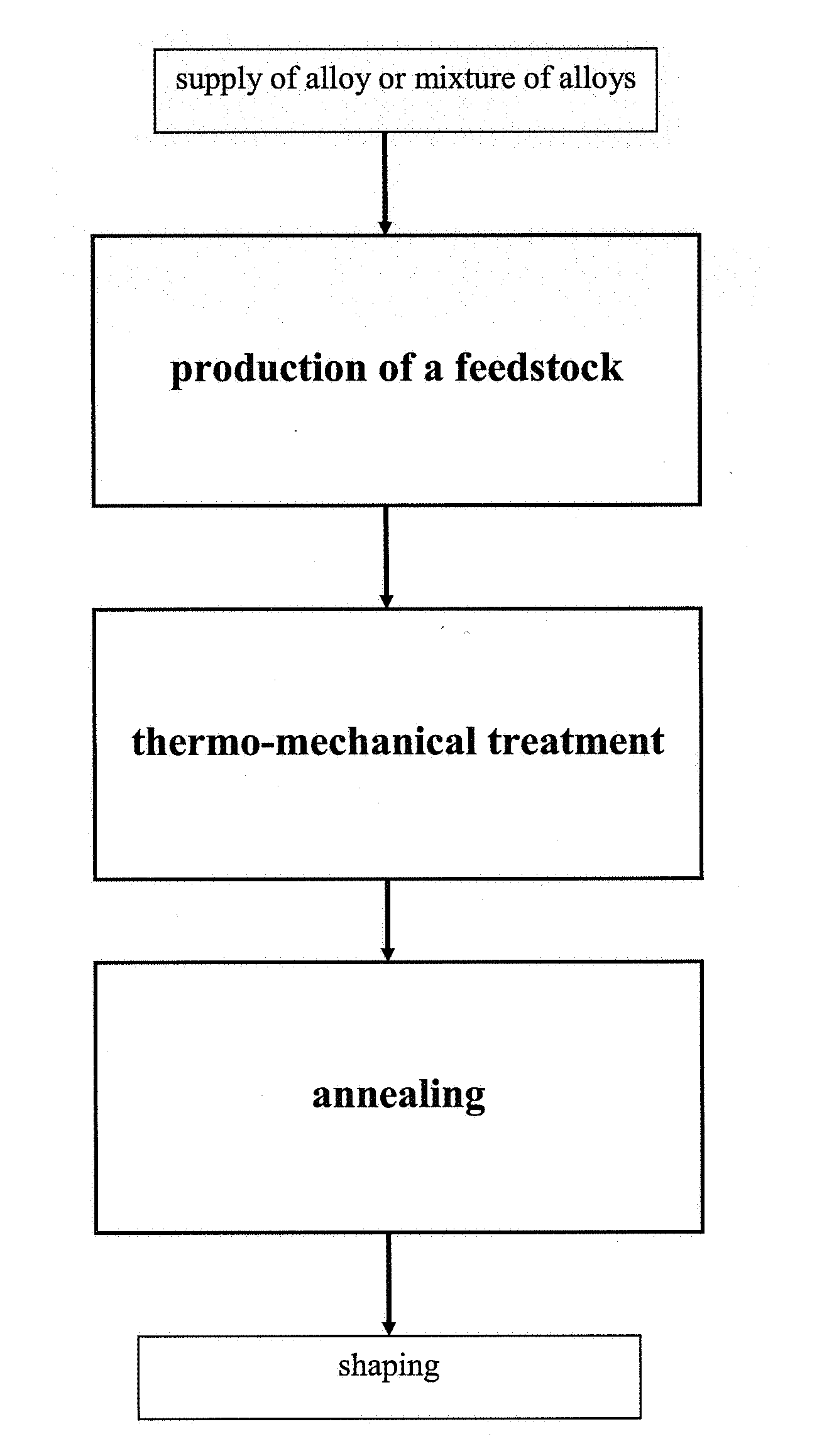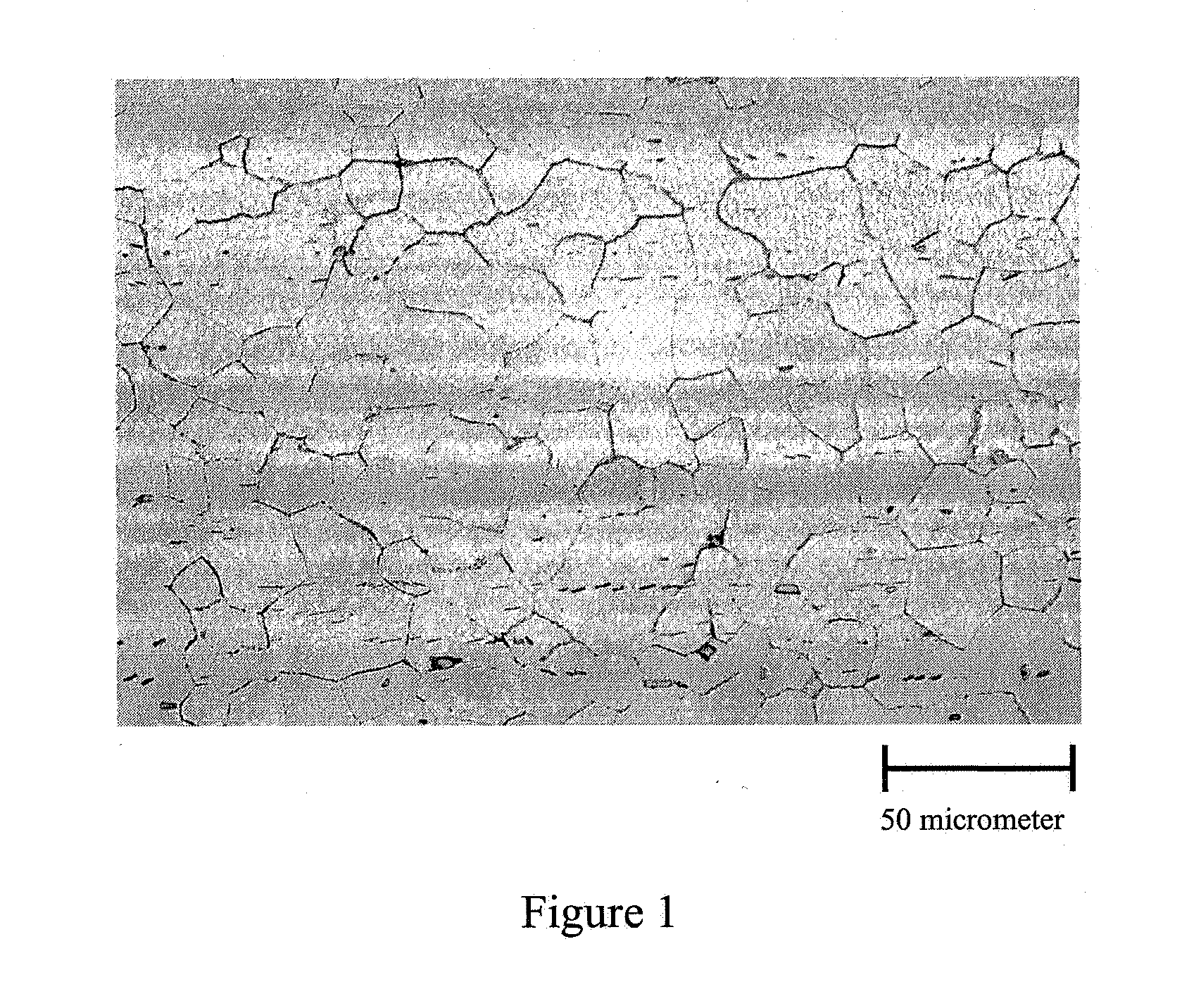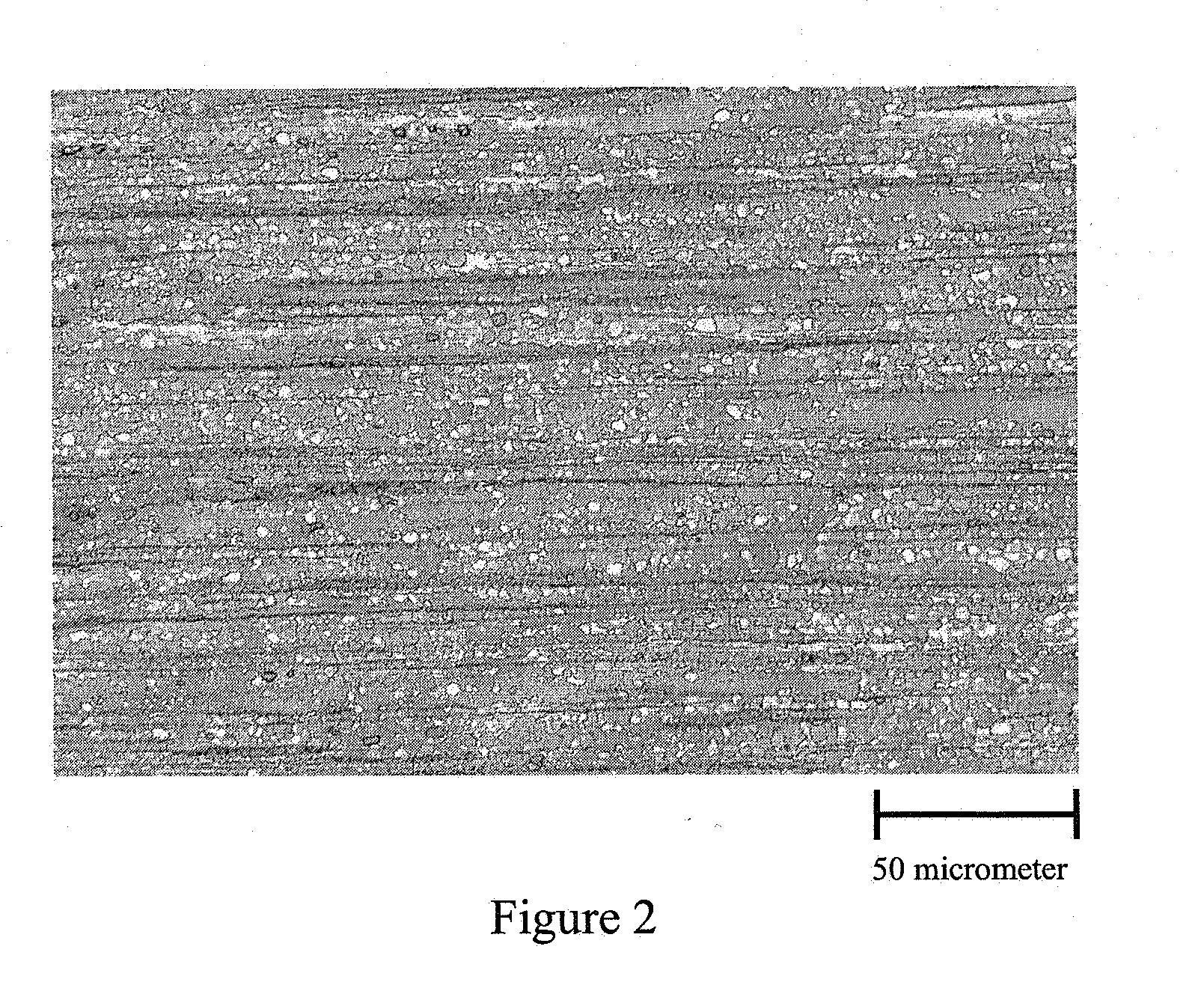Process for manufacturing magnesium alloy based products
a magnesium alloy and manufacturing technology, applied in the field of magnesium alloy based products, can solve the problems of poor corrosion resistance of common magnesium alloys, hindering the use of structural applications in a non-protected or even hostile environment, and loss of mechanical integrity of implants, so as to improve integrity, not dissolve too fast, and improve the effect of integrity
- Summary
- Abstract
- Description
- Claims
- Application Information
AI Technical Summary
Benefits of technology
Problems solved by technology
Method used
Image
Examples
example
AZ80 with 8.0 wt % Al, 0.5 wt % Zn and 0.2 wt % Mn
[0035]The semi-solid state is achieved by heating chips and turnings in the range between 560 and 600 deg.C. under an argon atmosphere during 1 to 10 minutes (hold time). A cooling rate between 1 and 2 deg.C. per second was achieved by circulating liquid nitrogen in the mould through cooling channels. The smallest grain sizes were obtained at the shortest hold time and the fastest cooling rate.
[0036]The semi-solid processed material, viz. the feedstock was extruded at 375 deg.C. at an area reduction ratio of R=25. The grain is reduced from 16 micrometer to less than 3 micrometer after thermo-mechanical process of extrusion.
[0037]Next an annealing treatment was applied at 330 deg.C. for 2 hours.
[0038]The corrosion rates were measured in a simulated body fluid at 37 deg.C. For the conventional AZ80 alloy the average corrosion rate of four experiments was 0.54 mm per year, whereas the rate for the material produced with the process acco...
PUM
| Property | Measurement | Unit |
|---|---|---|
| grain size | aaaaa | aaaaa |
| grain size | aaaaa | aaaaa |
| corrosion rate | aaaaa | aaaaa |
Abstract
Description
Claims
Application Information
 Login to View More
Login to View More - R&D
- Intellectual Property
- Life Sciences
- Materials
- Tech Scout
- Unparalleled Data Quality
- Higher Quality Content
- 60% Fewer Hallucinations
Browse by: Latest US Patents, China's latest patents, Technical Efficacy Thesaurus, Application Domain, Technology Topic, Popular Technical Reports.
© 2025 PatSnap. All rights reserved.Legal|Privacy policy|Modern Slavery Act Transparency Statement|Sitemap|About US| Contact US: help@patsnap.com



